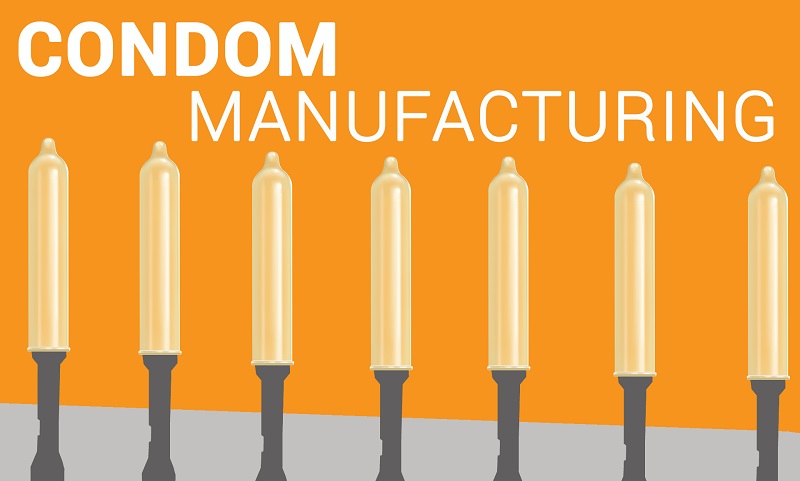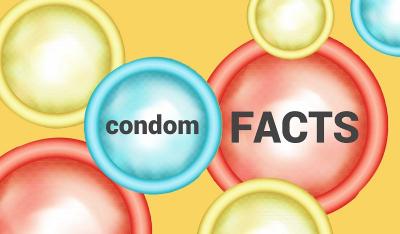How condoms are made? What are the quality control measures adopted?

Condoms have been around since 1850s. From primitive version to current electronically tested versions, condom production processes have evolved. The quality has evolved to a great extent. From being devices used only for protection, condoms have become tools for experiencing enhanced pleasure during lovemaking. The invention of rubber vulcanization process saw the introduction of rubber condoms. Since the introduction of rubber condom dating back to mid of 18th century, condoms have now become thinner, more durable, more comfortable and more pleasurable.
How condom got its name?
According to unconfirmed sources, it is believed that condom was originated by a doctor by name Dr. Condom or Dr. Conton, who invented condom to help royals enjoy lovemaking without having to worry about illegitimate inheritance.
How condoms are made?
Latex Extraction
A condom ideally originates from a rubber tree. It all starts with an extraction of a milky substance (latex) from the rubber trees and it goes through a long process of manufacturing to ultimate land in your bedroom. The scientific name for the rubber tree is Hevea Brasiliensis. Rubber trees are widely found in rainforests in South America and Indonesia. The raw material (latex) for today’s world condom production comes from the two above countries.
These trees thrive in the rainforest environments of South America and Indonesia. That's where the latex for today's condoms mostly originates. Latex procurement contractors procure this during night or early morning when the air temperature is relatively low to ensure the latex is captured in its fresh and pure liquid form.
Condoms made in other materials
Condoms are currently made using four materials:
- Latex (rubber)
- Polyurethane
- Polyisporene (synthetic)
- Natural (animal intestines)
As few people (both men and women) are allergic to latex, condoms are also made using other materials to help such people have protection during lovemaking. Non-latex condoms contain no rubber allergens and thus allow such people to use condoms without any allergic reactions on their genitals or skin of other body portions.
Raw latex storage
After the collection process, natural latex is kept is stored in temperature-controlled tanks. This is essential to prevent latex from coagulating as it is important to keep it in its natural form. Then, latex collected in its pure form is distributed to condom production facilities across the world and thus condoms are made.
Latex Quality Testing
Condom manufacturing units will thoroughly test latex quality before using them to produce condoms. The quality of latex is directly proportional to the quality of the condom, thus condom manufacturing units do a rigorous testing before subjecting them to manufacturing process.
Latex Compounding
Latex compounding is a complex process and involves several stages. Essentially, it is a curing process. The latex sourced from natural rubber is made to undergo compounding, which involves mixing it with few other chemicals. The compounding determines the condom strength, thinness, softness, elasticity, uniform thickness etc., Once the latex compounding is done, it is then fed into the computerized, automated machine, which will change the milky looking latex compound into condoms.
Dipping Process
This the process where one can see the condom in visible form. The production line will have a series of spinning glass molds in the shape of a condom. The glass will run through the dipping tank to catch a thin layer of latex along its outer layer. Each glass mold is made to run through dipping tank twice to create a thick layer of latex around its outer. This will ensure a light yet durable film of latex is added into the mold. The temperature in the latex dipping tank will be maintained around 15°C.
Then the glass molds will go through the drier so that a condom is made. Once when the latex is completely dried, a rotating brush runs through the top of the glass mold thus forming a thin ring at the top. Then the glass molds will be made to go through a few minutes of oven-curing.
Now, condoms are removed from the glass mold using high-pressure water jets. The glass molds will pass through a series of water jets and the falling condoms are collected in a bin.
A whole batch of condoms thus produced, is washed and dried with a solution so as to remove the layer of powder form the latex outer surface. This basically prevents the condoms from sticking to each other.
Condom Testing Procedures
Individual Pinhole test
Every single condom produced is made to go through an automation microscopic pinhole test to ensure there is no holes present in the condom. This involves placing condom onto a mandrel, which are metal molds in the shape of a condom. The condom covered mandrel is made to pass through an electric chamber. As the mandrel is a metal and can conduct electricity, any hole present in the condom, even if it is a microscopic hole, or a weak spot is indicated as electricity can run through it.
The machine automatically expels condoms that tests positive in the microscopic electrical pinhole test. Condoms that pass through microscopic pinhole test successfully are rolled up and presented in the flat shape that we see in the packaging. The electronic testing is a reliable test method that ensures all the condoms that gets packed are of top quality and without any hole or weak spot in it.
Other tests conducted to ensure condom quality control
Not just the microscopic pinhole testing, condoms go through a series of testing procedure to ensure it is free from defects and it is absolutely safe for use. There are few tests conducted to ensure its material durability even in case of a rough use.
The list of tests that every batch of condoms are made go through:
- Airburst test
- Water balloon test
- Tensile strength test
- Aging test
Let us see each one of the above in detail:
- Condom airburst test – Each condom will be inflated in a closed chamber to measure the amount of air that a condom can absorb before bursting. The airburst test ensures condom’s elasticity and strength. Generally, condoms are inflated with 25 liters of air per minute.
- Water balloon test – This test involves filling condoms with water and condoms are made to hang with a heavy load of water for a prescribed period of time. As the condoms are hung with sufficient water for a long time, water seeps through any leakage (even if it is in microscopic proportion) and weak spots can also be identified as the bulge won’t be uniform in that spot.
- Condom Tensite Test – This test is done to see how durable the condom is. This test involves stretching the condom to the maximum before it breaks. A ring is chopped form the central portion of the condom and stretched like a rubber band. Most latex condoms spread to a length of 750 times their original size.
- Aging Test – This is an important test conducted to determine the aging period of condoms. The aging test involves placing condoms inside a special oven having a controlled temperature and humidity. This procedure is done to establish the lifespan of the condom. This results help ensure that latex condoms, when stored properly, can be used reliably until its expiry date. Though there are few other tests such as factory lab tests are conducted to determine the condom aging.
Remember, condoms are regarded as medical devices and have to go through stringent regulatory guidelines of any country. Government agencies keep a very close watch on the quality of all medical devices including condoms. As it can prevent infections, government places utmost importance to quality of condoms. Also, customers don’t like to think about its quality every time when they wear it over their organ, users should trust on the condom reliability subconsciously, only then they can engage in a safer and satisfying sex. When they get even an iota of doubt about condoms, the fear will drain their happiness and lovemaking may not be as delightful as expected.
Condom Automatic Packaging
This is the stage where condoms go through a packaging line. At one point, the machine spills lubricants on to the top of the flattened condom (which is the tip). And then condoms are sealed into a wrapper using an automatic sealing machine.
Retail Packaging
Once sealed inside the wrapper, condoms are placed into retail boxes in defined quantities. Product expiration dates are printed on each wrapper before it is being placed inside the final retail box.
Final product
Now the condoms are ready for distribution and thus reach the stores from where you can buy them for your individual use.
So, next time when you buy a pack of condom, appreciate the amount of work it goes through and processes involved in ensuring that it reaches your hand as the safest product. This knowledge will also help you indulge in your lovemaking without any doubt about the quality and you can be sure that it would be 99.8% reliable at all times.















Comments